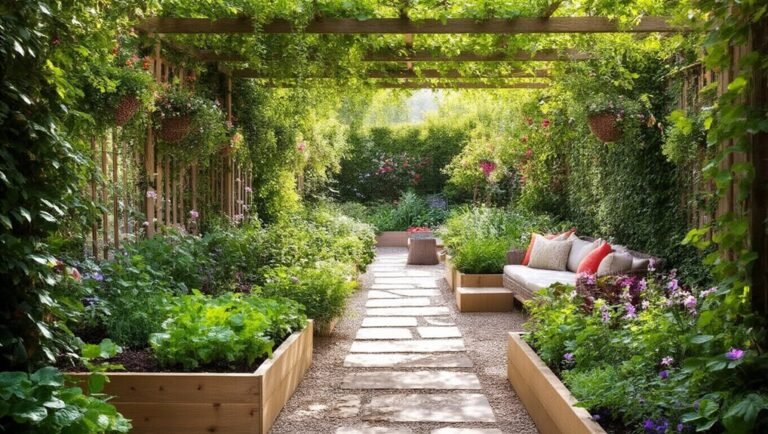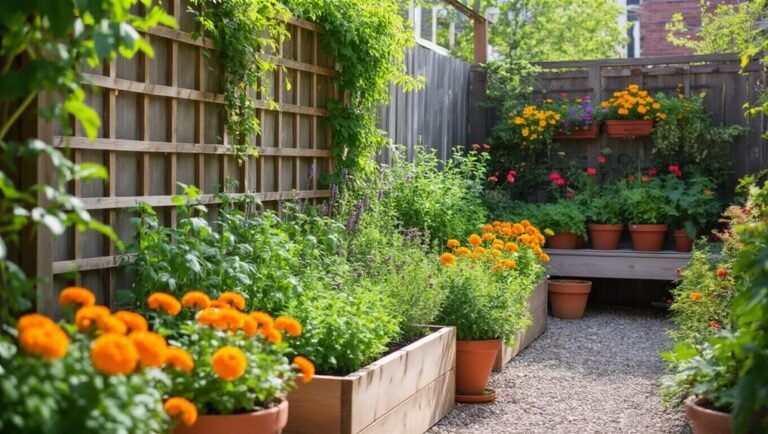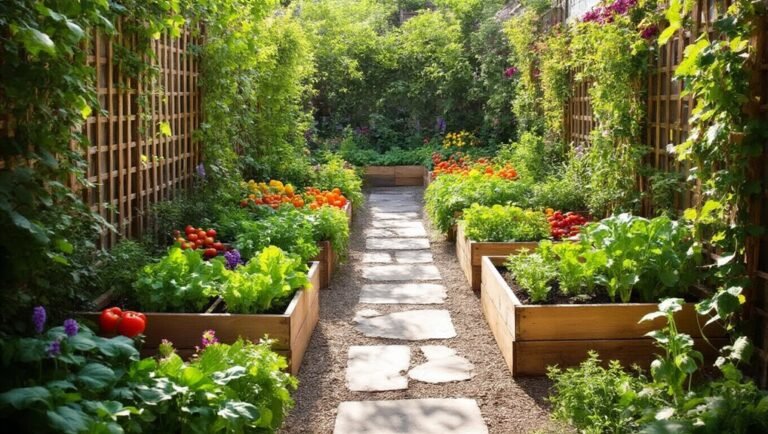Indoor gardening with grow lights lets you nurture vibrant plants year-round. First, understand the different types of lights—LEDs are energy-efficient, while fluorescents are great for seedlings. Choose the right spectrum and intensity for your plants’ needs. Set up your garden by planning the layout and positioning your lights correctly. Don’t forget care routines like watering and checking for pests. Keep going, and you’ll uncover essential tips for ensuring your plants thrive indoors.
Key Takeaways
- Select the right type of grow lights (LED, fluorescent, or HID) based on your space and plant needs for optimal growth.
- Understand the light spectrum required for your plants; use full-spectrum lights for diverse plant types and adjust for specific growth stages.
- Set up your indoor garden by planning the layout, positioning lights at the correct height, and using seedling heat mats for better germination.
- Ensure proper care by monitoring soil moisture, adjusting lights as plants grow, and maintaining optimal humidity and temperature levels.
- Troubleshoot common issues like overwatering, stretching, or pest infestations promptly to keep your indoor garden healthy and thriving.
Understanding Grow Lights: Types and Features
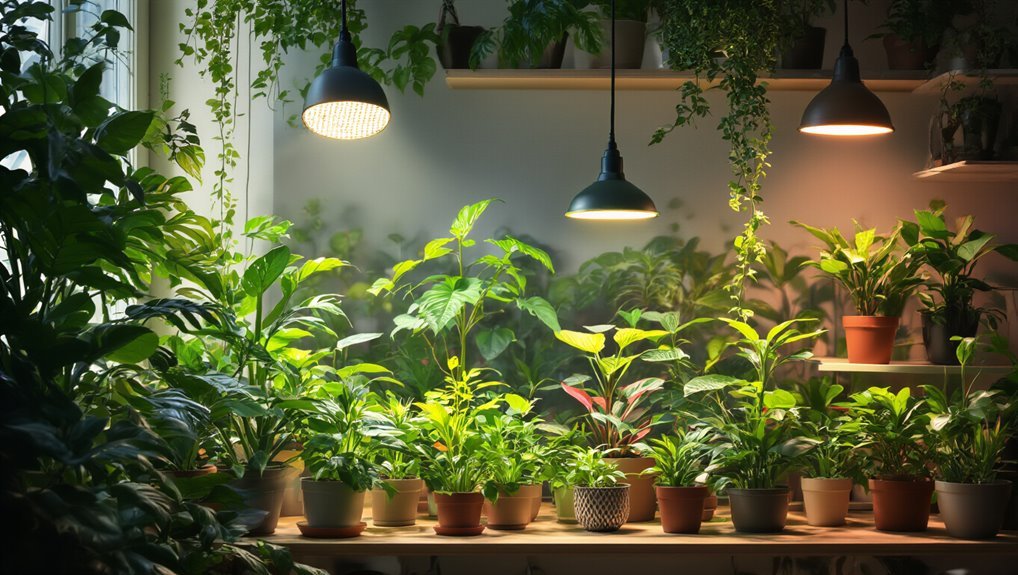
When you’re diving into indoor gardening, understanding grow lights is crucial for your plants’ success. Grow lights simulate sunlight, providing the necessary spectrum for photosynthesis.
There are several types to consider. LED lights are energy-efficient and have a long lifespan, making them a popular choice. Fluorescent lights are affordable and great for seedlings, while high-intensity discharge (HID) lights offer powerful light output for larger setups. For gardeners interested in minimizing daily maintenance, self-watering planters can be paired with grow lights to create a truly low-effort indoor garden.
Each type has unique features, like adjustable spectrums and heat output, which can impact your plants’ growth. Knowing your plants’ specific needs helps you choose the right light. For those seeking a soil-free approach, hydroponic gardening systems offer an innovative way to grow plants indoors using nutrient-rich water solutions.
Choosing the Right Grow Lights for Your Plants
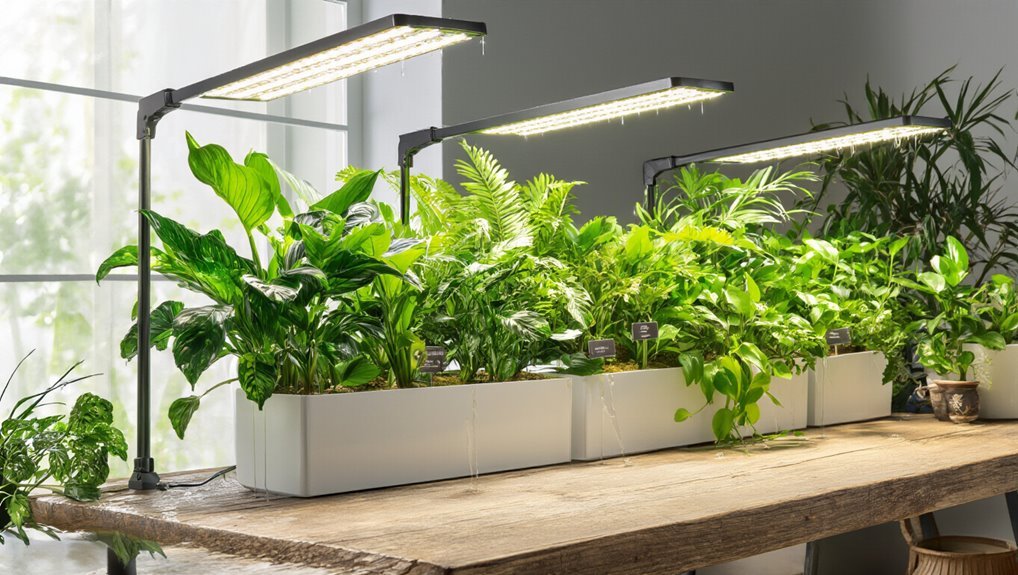
Choosing the right grow lights for your plants can significantly impact their growth and overall health.
Start by considering the light spectrum your plants need. Most plants thrive under full-spectrum lights, which mimic natural sunlight. LED lights are energy-efficient and long-lasting, making them a popular choice. If you’re growing flowering plants, look for lights with a higher red spectrum, while leafy greens prefer more blue light. If you’re interested in starting an herb garden kit with seeds and pots, grow lights can help your herbs flourish indoors regardless of outdoor lighting conditions.
Next, think about the intensity of the light. Some plants require more light than others, so check their specific needs. Wattage and lumens can guide you here.
Finally, consider the size and layout of your space. Make sure the lights you choose can cover the area effectively without wasting energy. Your plants will thank you!
If you’re interested in growing indoor herb gardens, using proper grow lights can help ensure your herbs thrive year-round, even in low-light conditions.
Setting up Your Indoor Garden With Grow Lights
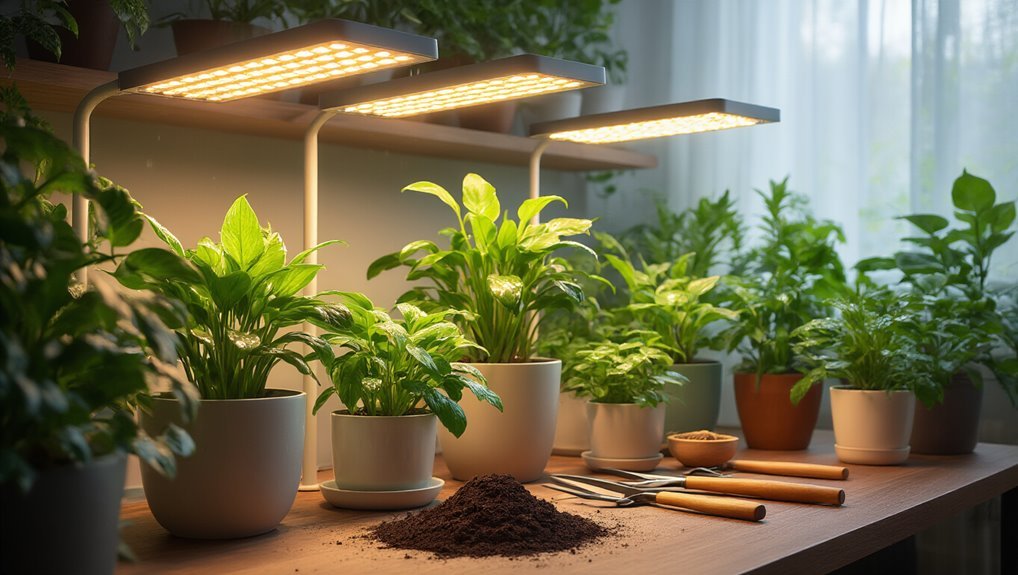
To create a thriving indoor garden with grow lights, you’ll want to first assess your available space and plan your layout accordingly. Consider the types of plants you want to grow and their light requirements. Position your grow lights at the appropriate height above the plants, ensuring adequate coverage. For even more robust germination and healthy early growth, many indoor gardeners use seedling heat mats to provide gentle warmth to their seed trays.
Here’s a simple setup guide to get you started:
| Step | Description |
|---|---|
| Measure your space | Know the dimensions of your area |
| Choose your plants | Select plants based on light needs |
| Position lights | Ensure lights cover all plants |
| Adjust height | Set lights 12-24 inches above plants |
| Monitor growth | Check plant health regularly |
With a well-planned setup, you’ll set the stage for a flourishing indoor garden. For gardeners looking to optimize their indoor setup, using essential seed starting kits can significantly increase your success and make the process even more efficient.
Care and Maintenance for Thriving Indoor Plants
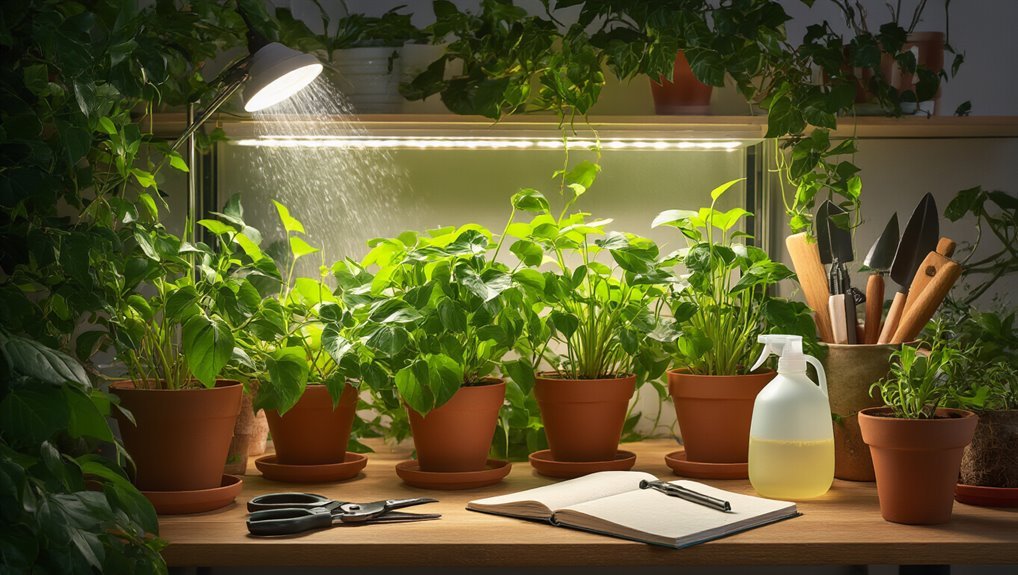
While setting up your indoor garden is crucial, the care and maintenance of your plants are what truly determine their success.
Regular attention ensures your plants thrive and stay healthy. Here are four key care tips to keep in mind:
- Watering: Check the soil moisture regularly. Water your plants when the top inch feels dry, but avoid overwatering.
- Light Management: Adjust your grow lights as plants grow. Ensure they receive the right amount of light for their specific needs.
- Humidity and Temperature: Maintain appropriate humidity levels and temperatures. Most indoor plants prefer a range of 60-75°F (15-24°C). To further support your indoor garden, consider the benefits of plant food options to nourish your plants and help them flourish.
- Fertilization: Feed your plants with a balanced fertilizer every few weeks during the growing season to promote healthy growth.
For an even easier way to supply nutrients to your plants, consider using plant fertilizer tablets, which offer a convenient and effective method to boost your indoor garden’s health.
Troubleshooting Common Indoor Gardening Issues
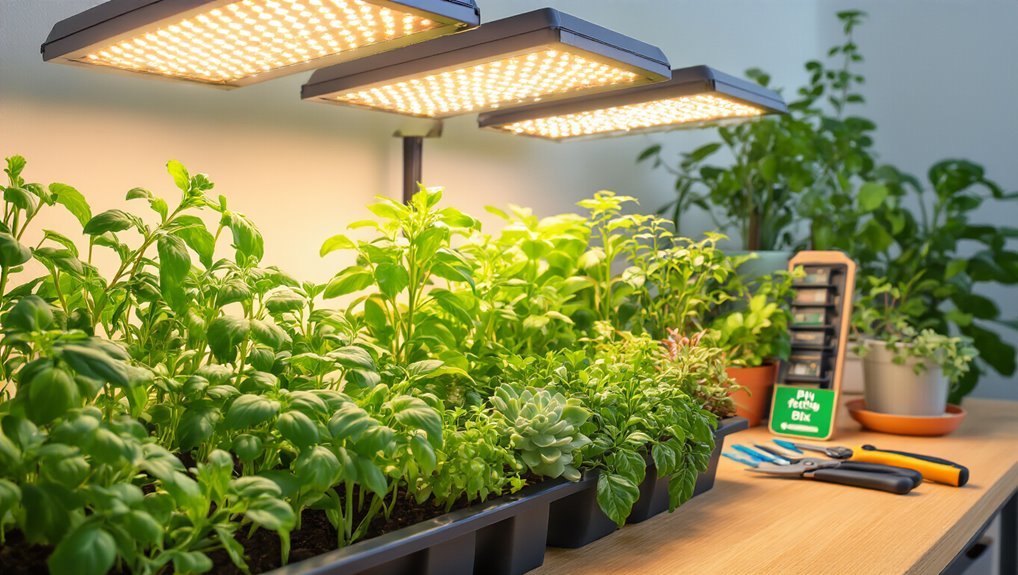
Indoor gardening can be rewarding, but you might encounter issues that threaten your plants’ health. Start by checking for signs of overwatering, like yellowing leaves or root rot.
If your plants are stretching towards the light, they need more brightness. Conversely, if you notice scorched leaves, your grow lights may be too close.
Pests can also be a problem; inspect your plants regularly for signs of infestation, like webbing or tiny holes. If you spot any, treat them promptly with insecticidal soap.
Lastly, keep an eye on humidity levels—too low can cause leaf drop, while too high can lead to mold.
With careful observation and adjustments, you can keep your indoor garden thriving.
Frequently Asked Questions
Can I Use Regular Bulbs Instead of Grow Lights?
You can use regular bulbs, but they won’t provide the spectrum or intensity your plants need. Grow lights are specifically designed to support healthy growth, so it’s best to invest in them for optimal results.
How Long Should I Run My Grow Lights Daily?
When sunlight fades, your grow lights should shine. Generally, run them for 12 to 16 hours daily, mimicking natural daylight. Adjust based on plant needs, ensuring they thrive in their indoor oasis without overstimulation.
Are Grow Lights Safe for Pets and Children?
Yes, grow lights are generally safe for pets and children. Just ensure they’re out of reach and properly installed to avoid overheating. Always monitor your plants and lighting setup for any potential hazards.
Do I Need to Adjust Light Intensity for Different Plants?
Yes, you should adjust light intensity for different plants. Some thrive in bright light, while others prefer low light. Observing your plants’ responses will help you fine-tune their light exposure for optimal growth.
Can I Use Grow Lights for Seed Starting Indoors?
Did you know that 80% of indoor gardeners use grow lights for seed starting? You can definitely use them indoors to provide essential light for your seedlings, ensuring they sprout strong and healthy in any season.
Conclusion
By embracing indoor gardening with grow lights, you’re not just nurturing plants; you’re also enhancing your living space and mental well-being. Did you know that indoor plants can improve air quality by removing up to 87% of toxins in just 24 hours? With the right setup and care, you can create a thriving green oasis right in your home. So grab those grow lights, and watch your indoor garden flourish like never before!
